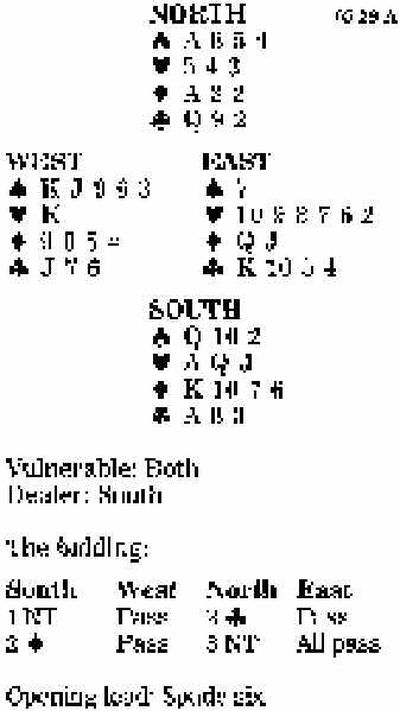Bridge

Teaching bridge to schoolchildren is one of the most important ways to preserve and improve the game we love. The ACBL’s newest program is aimed at making bridge an after-school activity. Kitty Cooper in Albuquerque has devised the program, which combines the Audrey Grant club series on bridge with the European simplified version of bridge called mini-bridge. Basically, the children go through several card games before starting on regular bridge with bidding. Anyone interested should look for the programs on the ACBL Web site.
As well as being involved in teaching, Kitty is a past world-champion and many-times national champion. Here is a deal she played to win a knockout match.
In three no-trump, on a low spade lead, Kitty won her spade 10 and played a diamond to dummy’s ace to finesse in hearts. When West won and exited with a diamond, Kitty could win in hand and try a club to the queen, but her luck was out again. East won the club king and played a heart. West discarded a spade, thus suggesting he had four diamonds, five spades, one heart and thus three clubs. That being so, Kitty made the key play when she ducked a club. West won the trick and played back a diamond. Kitty took this in hand, cashed the heart and club aces, and exited with a diamond to West. That player was reduced to the king-jack doubleton of spades and had to lead into the split tenace, conceding the ninth trick.
Bid with the aces
South holds:
| •Q 10 2 | |
| •A Q J | |
| •K 10 7 6 | |
| •A 8 3 |
| South | West | North | East |
| 1 • | Pass | ||
| 1 • | Pass | 3 • | Pass |
| ? |
Answer: Bid six clubs. Yes, you could fool around using Blackwood, but you will never find out enough to bid a grand slam. Moreover, partner must have at least one ace, so why not bid what you think you can make and give away as little as possible in the process?